- Bernard Preston homepage
- Beekeeping
- Waxing Honeybee Frames
Waxing honeybee frames
Waxing honeybee frames is an art easily accomplished even by a child; but practice makes perfect.
Fitting sheets of foundation wax into the frame quickly and efficiently is an important part of backyard beekeeping; and serious honey farming too.
Done sloppily, the expensive sheets of foundation wax come loose, bend and twist, resulting in crooked combs.
Since 2020 I have started to use plastic foundation for waxing honeybee frames, and with some initial success.
I will write about the subject when I have used it for a bit longer, so that you can be more confident of my opinion.
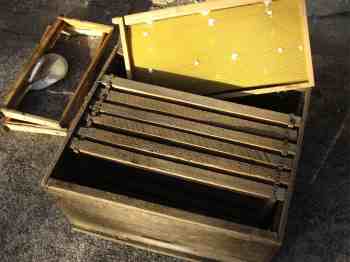
This page was last updated by Bernard Preston on 7th April, 2023.
There are a variety of techniques. For thirty years I used the top bar method, where a strip of wood is used to lock the wax in place. It works, but it has some disadvantages.
- It's time-consuming and fiddly, and the strip often splits when you drive the nails in.
- Much worse, waxmoth larvae love the little slot, making an ideal home for this pesky little parasite.
Finally after many years of trial and error, I have settled for something much simpler, quicker and more efficient; a candle. If you're a purist, use a beeswax taper; but they do not seem to mind very small amounts of the synthetic stuff, and it is only a few drops, once off.
Step 1 is to send your raw wax to a company that will roll it into sheets with the cells of a honeycomb imprinted on it.
Take a sheet of this foundation and weave it between the wires of the frame. Fit it snugly against the topbar, actually at the bottom, as you do it upside down. Slide it into the slot if there is one.
Running a gas torch down the groove will clean out any old wax. Slide a chisel firmly down the groove; it will open it slightly when hot to receive the edge of the sheet of foundation.
You may need to trim off some of the wax if it is slightly too
large. Keep the bits; it is valuable stuff.
Wax the honeybee frames quickly, but carefully; thread the wax foundation sheet between the four wires so that it is held firmly in place.
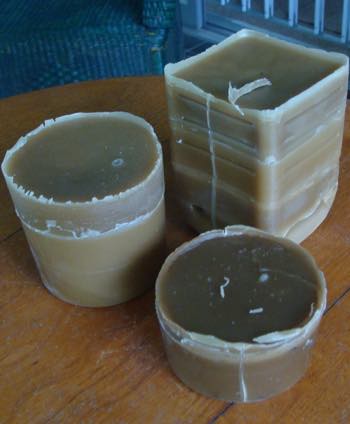
Waxing honeybee frames
Waxing honeybee frames is not difficult but to do it expertly, takes practice.
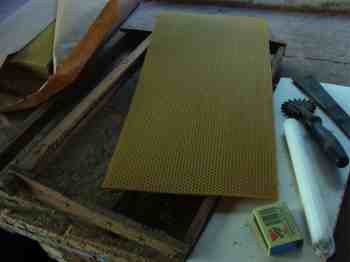
Step 2 is to cut a piece of chipboard to fit snugly within the boundaries of the frame. Lay it, with wax intact on the board, and embed the wire into the sheet, using a roller, pressing onto the backing plank.
Step 3 is to drip the burning candle onto the wire to fix it onto the wax sheet. Otherwise it may come loose if bumped; or if the weather is hot, then your sheet becomes twisted and distorted.
These wax sheets of foundation will remain in your hive for years: get it twisted on day 1 and it is crooked for ever.
Recently I learned that a gas torch can be used more easily; I am ready to try it next time I am waxing honeybee frames.
Step 4 is to drip hot wax onto both sides of the sheet where it it meets the topbar. There may be a slot, or a wedge-shaped piece for the locking it (which I discard), or none at all.
Let the wax dry, and make sure everything is firm and tight. I think it works much better than the locking bar and only embedding the wire into the wax.
If you have the time and the patience, heat some beeswax into a small can, and dribble it as above; better but fiddly.
Waxing honeybee frames for the broodchamber is much the same.
Fit 10 frames into your broodchamber and, if you are using it for a bee trap. The central four should have super size wax enabling them to cluster. Keepers have done tests and swarms will choose a box with room to cluster over one with full wax throughout.
Then place the whole broodchamber, with 10 frames with foundation wax on top of a strong active hive for a day or so; the bees will start to draw out the wax and making it a lot more inviting for any scouts on the lookout for suitable HONEY BEE TRAPS ...
Then you'll be ready for the swarming bees ...
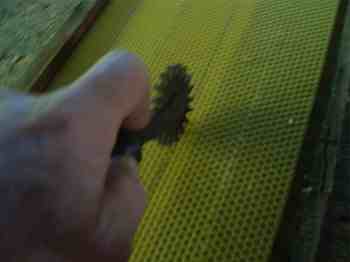
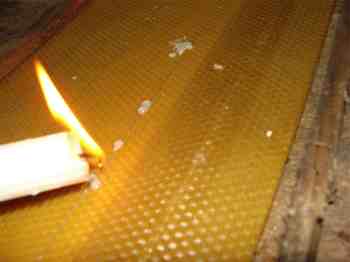
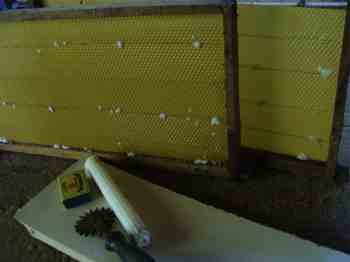
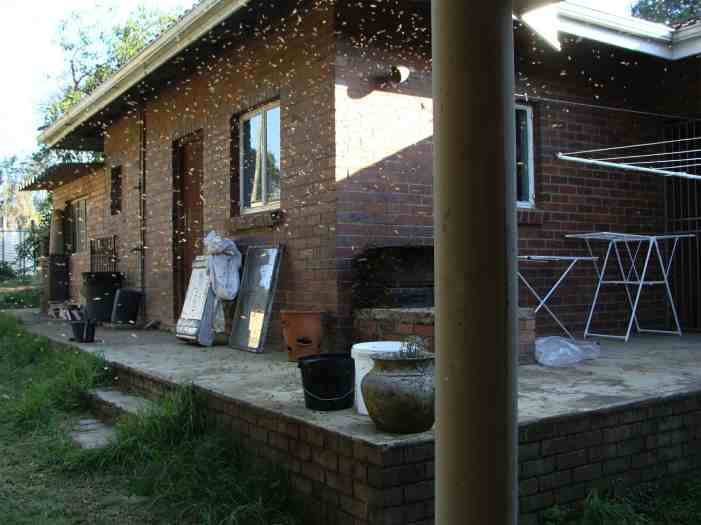
Wax extractor
Some form of wax extractor is vital for the beekeeper; obtaining this important byproduct of raw honey farming is important.
Otherwise you can't start waxing honeybee frames unless you purchase it in at great expense.
Since working with wood is one of my hobbies, I decided to make a beeswax solar extractor. It's a lot better than heating old wax combs on a hot plate; everything boils over the moment you turn your back. That is what happened for years until I was booted out the kitchen, and rightly so.
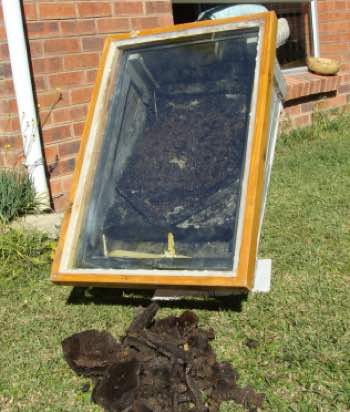
By using double-glazing very high temperatures can be achieved to melt the raw wax; my extractor has a double chamber, so the molten liquid is kept in the device.
It sits on a metal base plate so the wax extractor can be rotated to follow the sun; it is highly effective.
Raw honey
Raw honey of course is what it's all about. Commercial companies then ruin it by heating and processing; it changes the properties completely and destroys some of the important enzymes that make it unique.
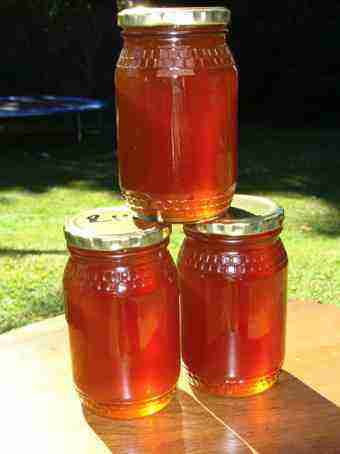
This is unheated raw honey, lightly filtered to keep the pollen granules that help with allergies and lower the glycemic index. It is without equal, the way the bees make it, and completely unprocessed.
Actually we are now creaming most of our raw honey. It keeps it soft like peanut butter; and it does not drip off the toast and trickle down to your elbows.
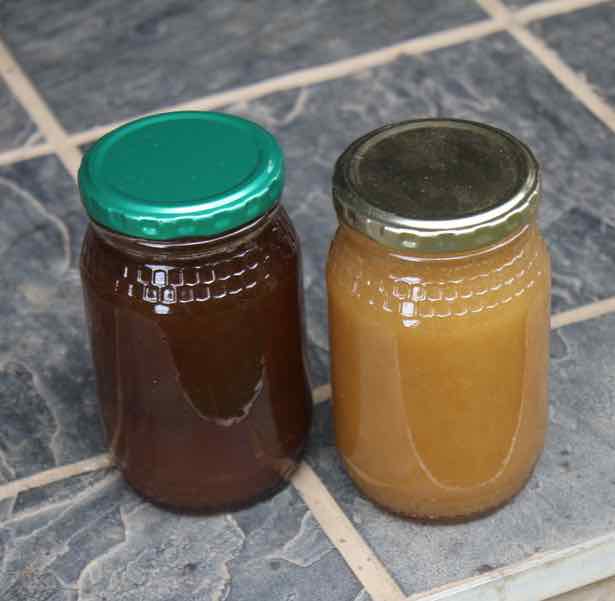
I now choose this creamed clover honey.
How to start beekeeping
How to start beekeeping for a teenager is not rocket science but, because they are potentially dangerous insects, the support and encouragement of an adult is my recommendation/
Our African bees kill a lot of people.They recently came very close to stinging all six of my hens to death; only a minor miracle saved them.
Newsletter
Our newsletter is entitled "create a cyan zone" at your home, preserving both yourself and Mother Earth for future generations; and the family too, of course. We promise not to spam you with daily emails promoting various products. You may get an occasional nudge to buy one of my books.
Here are the back issues.
- Lifestyle and ideal body weight
- What are ultra-processed foods?
- Investing in long-term health
- Diseases from plastic exposure
- Intensive lifestyle management for obesity has limited value
- A world largely devoid of Parkinson's Disease
- The impact of friendly bacteria in the tum on the prevention of cancer
- There's a hole in the bucket
- Everyone is talking about weight loss drugs
- Pull the sweet tooth
- If you suffer from heartburn plant a susu
- Refined maize meal and stunting
- Should agriculture and industry get priority for water and electricity?
- Nature is calling
- Mill your own flour
- Bake your own sourdough bread
- Microplastics from our water
- Alternative types of water storage
- Wear your clothes out
- Comfort foods
- Create a bee-friendly environment
- Go to bed slightly hungry
- Keep bees
- Blue zone folk are religious
- Reduce plastic waste
- Family is important
- What can go in compost?
- Grow broad beans for longevity
- Harvest and store sunshine
- Blue zone exercise
- Harvest and store your rainwater
- Create a cyan zone at your home
Often to get started, I recommend you beg or buy a colony from an established beekeeper. You will have to pay for the hive of course, but generally the colony comes for a very small sum. The wax is one of the biggest expenses.
But if you are lucky, you may catch a colony in a trap, or even some swarming bees may arrive like those above.
Ideally depending on a number of factors, it would be good to have at least three colonies. A remote spot in your garden is one of the most important criteria.
Obesity and diabetes
If you suffer from obesity and diabetes then refined supermarket honey should be avoided at all costs, and even this raw unprocessed carbohydrate should be strictly limited; perhaps a teaspoon a day. Test your blood sugar.
Removing all processed starch is the only way forwards and a little extra healthy fat oddly is not detrimental in your struggle to lose weight and controls the hunger pangs. Butter is back, and we recommend olive oil and avocados.
Making honey mead
One of the fun things to do with your gleanings is making honey beer. It takes considerable care with cleanliness, but otherwise it is not rocket science either.
Actually I now turn it into a braggart which is a beer made with honey; it is not sweet at all. All the sugars are turned into alcohol.
USEFUL LINKS
- Beekeeping equipment
- A bee under the mitre
- Panera bread menu recipe - not only the Queen in her parlour enjoys bread and honey.
Did you find this page interesting? How about forwarding it to a friendly book or food junkie? Better still, a social media tick would help.
- Bernard Preston homepage
- Beekeeping
- Waxing Honeybee Frames
Address:
56 Groenekloof Rd,
Hilton, KZN
South Africa
Website:
https://www.bernard-preston.com